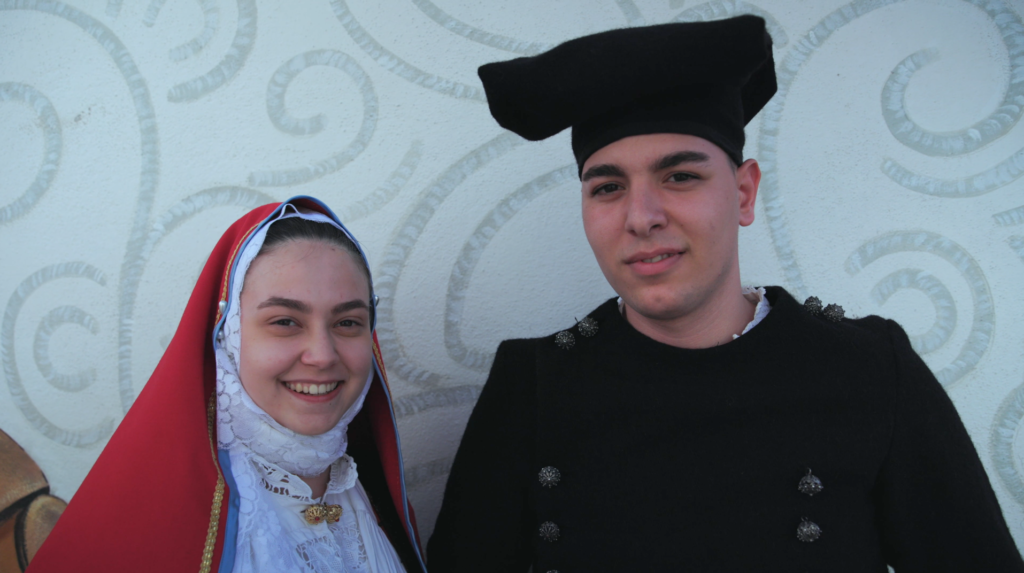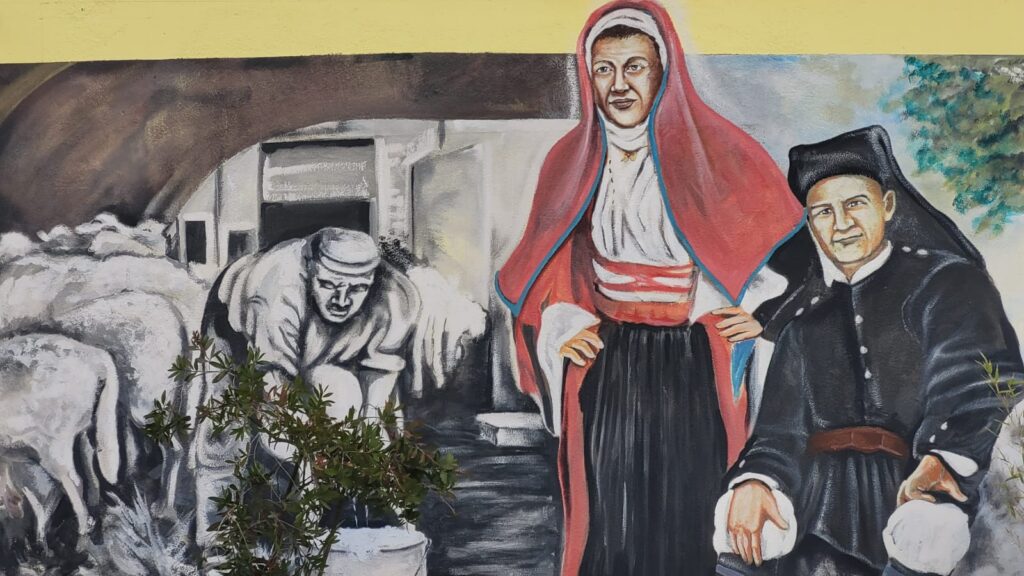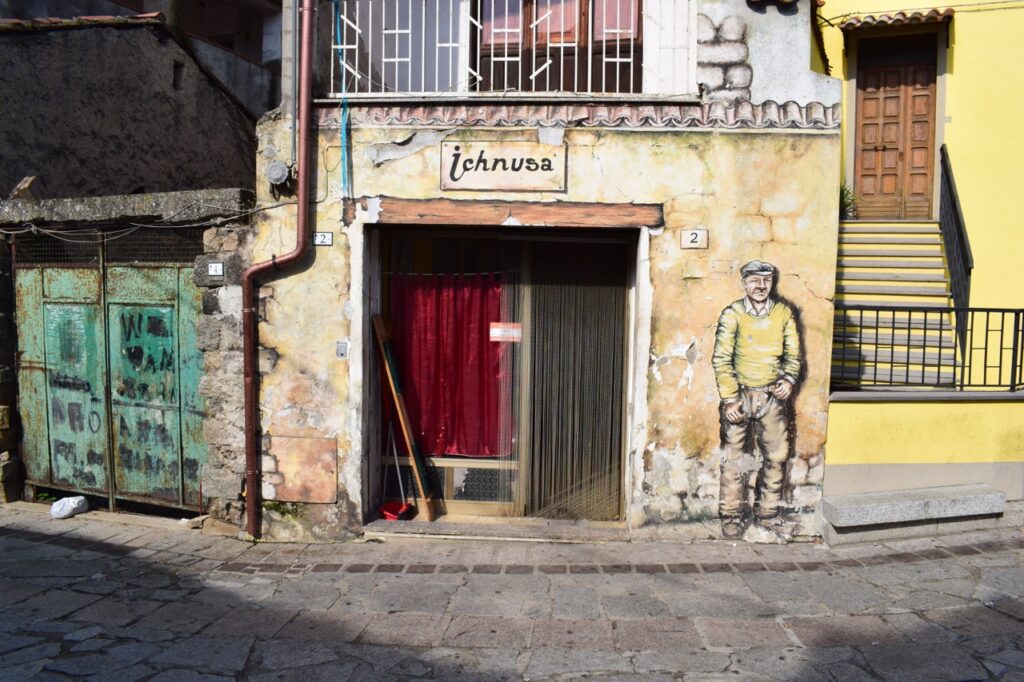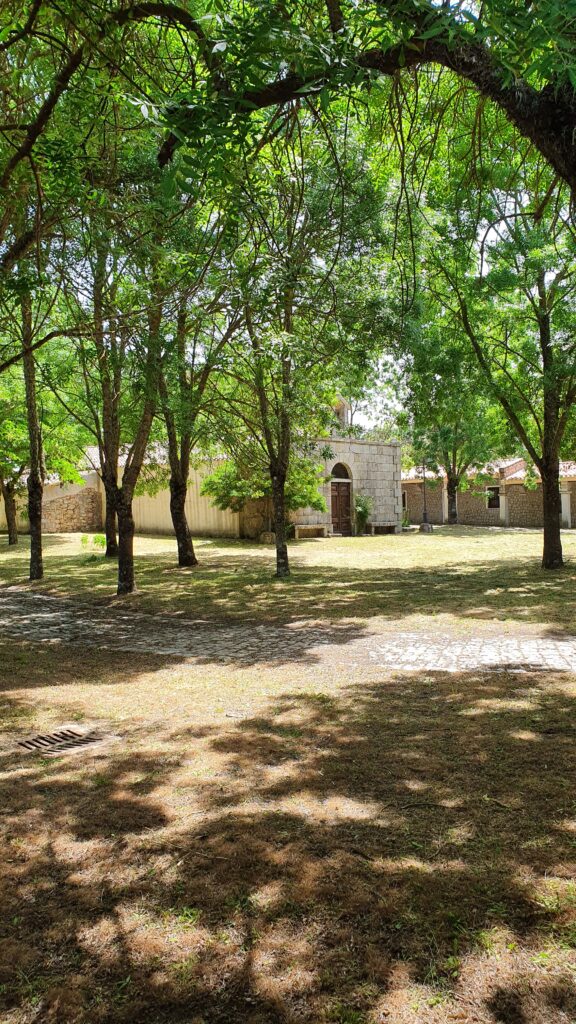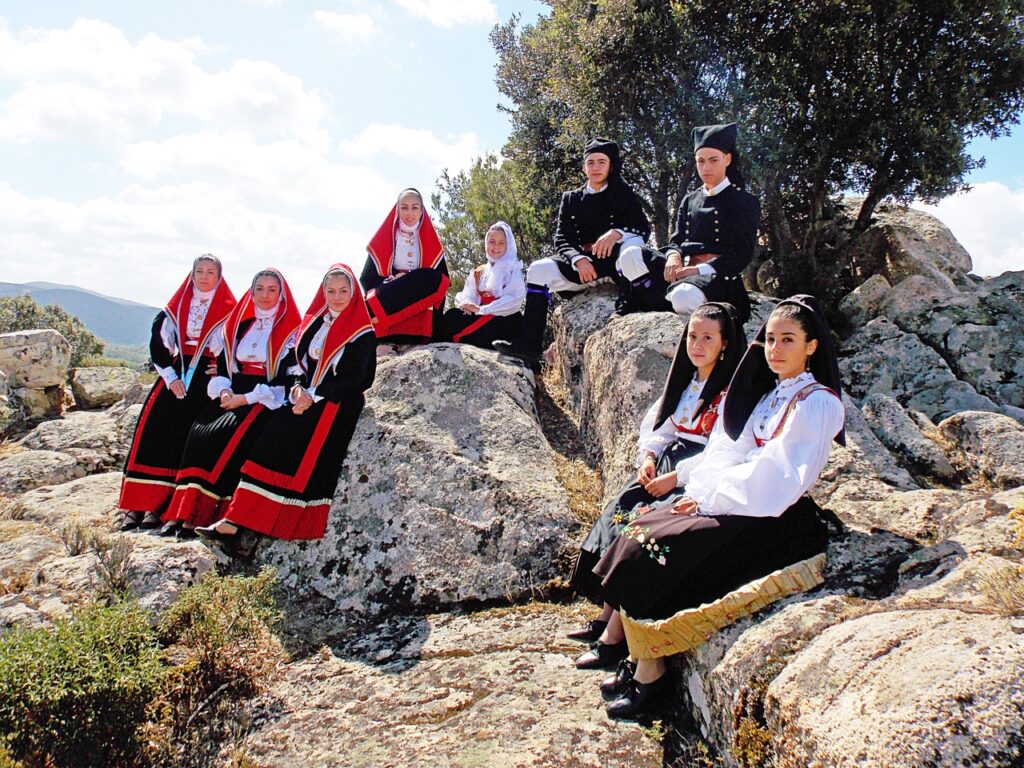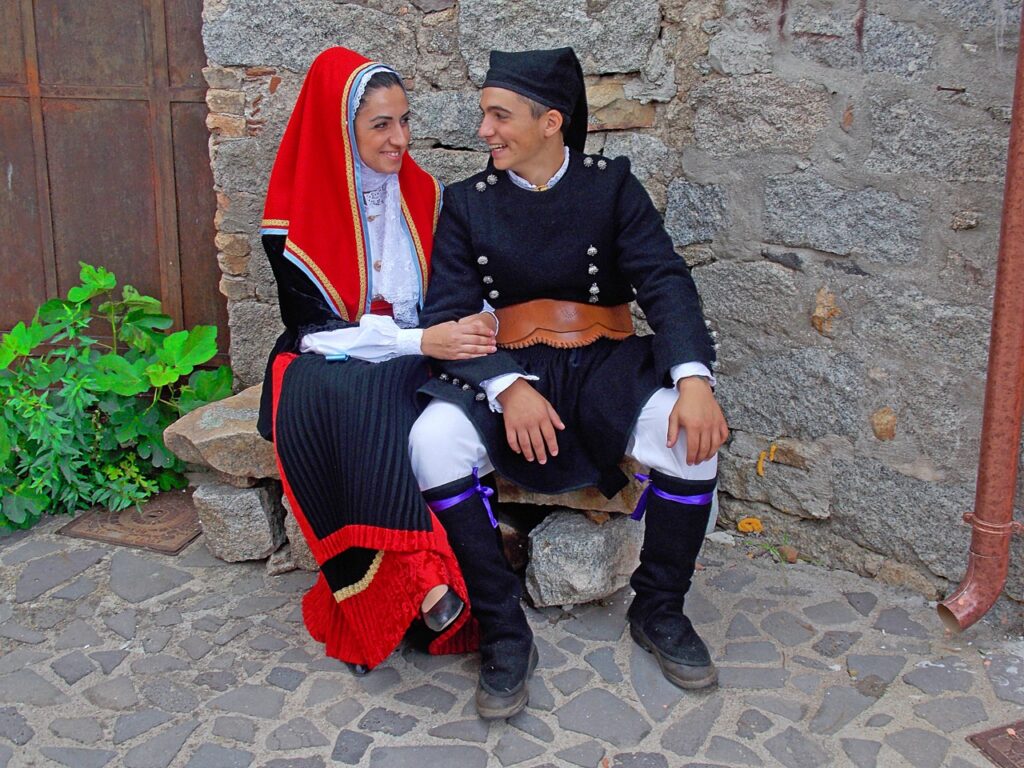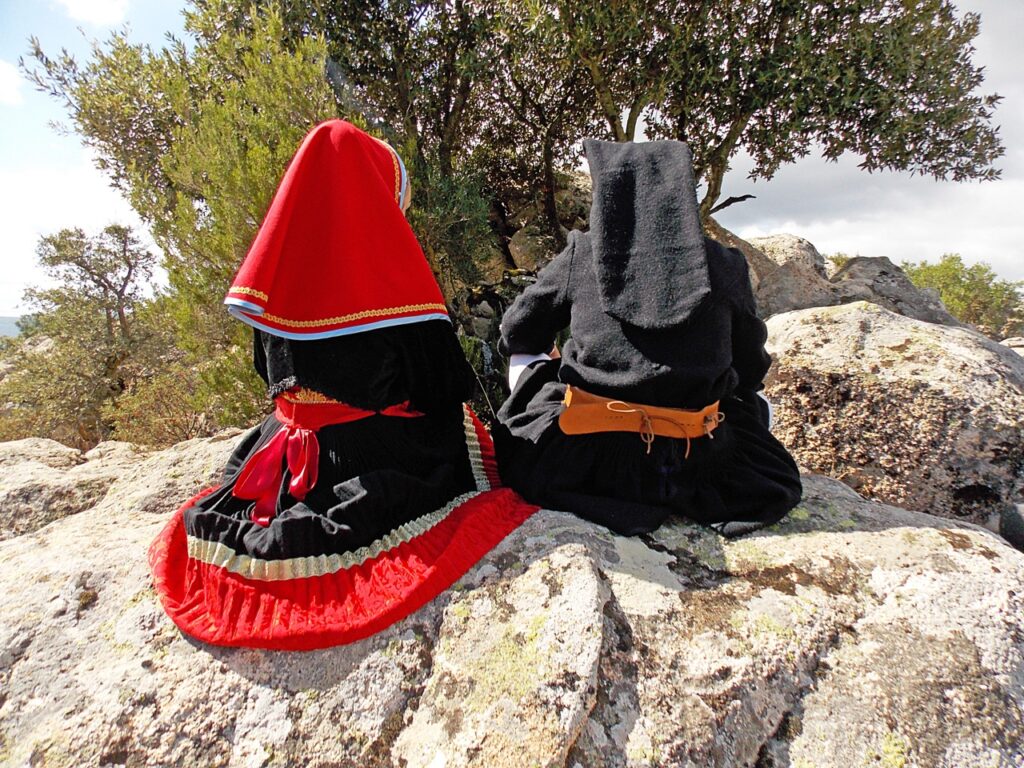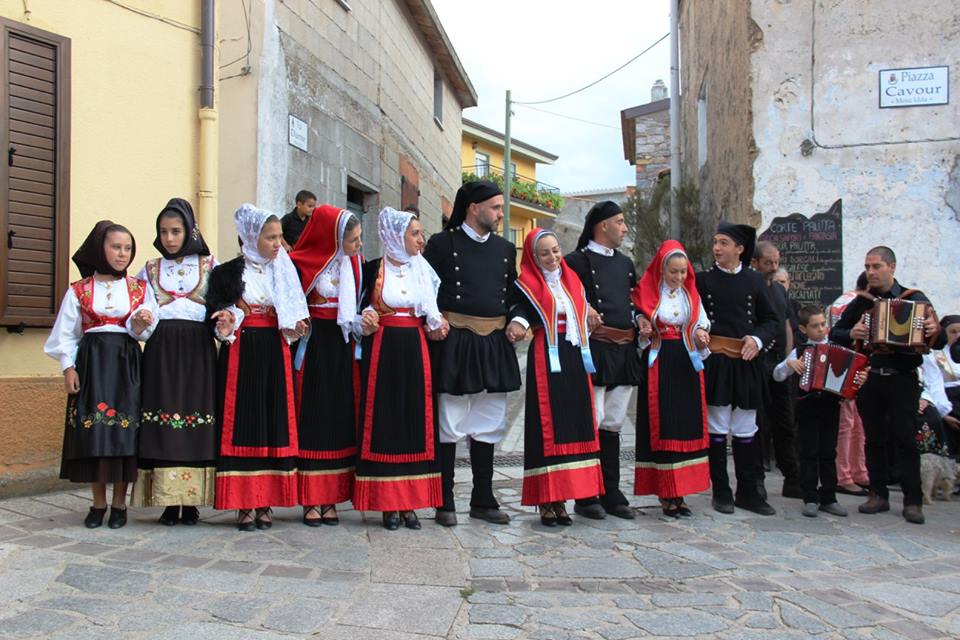Sardinia’s traditional costumes are not only the dresses used during the local folklore events but represent the way of dressing of our ancestors, small works of art that not only identify the origin of the person wearing it but tell its story. They are dresses sewn with precious fabrics, particular embroideries and decorated with splendid Sardinian goldsmith jewels. Each suit is a piece in itself and, in Sardinia, there are many that differ according to gender (man or woman), according to events (for parties or for every day), social status (rich and poor), work performed and marital status.
Austis women’s dress
Women wear a black cap which supports a white tulle or cotton veil embroidered entirely by hand and covered by a splendid red woolen cape that reaches up to the shoulders. Overall, the suit features a white cotton shirt embroidered on the collar, chest and cuffs. In particular, the collar is closed by a gold pin which sometimes depicts the classic Sardinian buttons. The brocade bodice worn above the shirt has a semicircle-shaped decoration in the back, called ‘su sestu’, which runs from the shoulders to the bottom edge of the garment. A black velvet jacket trimmed with black beads completes the outfit. The back of the jacket is cut in an arc to show the “su sestu” of the underlying bodice. The skirt is made of pleated black coarse wool and has a lower red flounce that is also present on the edge of the apron. Over the skirt women wear a pleated apron in black wool or coarse wool and a sash in red silk or satin wrapped around the waist. The jewels that adorn the costume are the typical Sardinian jewels of the Nuoro area made of gold and filigree.
Women were often not able to pay a seamstress to make the dress for them, so they consulted the elderly women of the village who could teach the art of traditional dress to younger women. During the days of celebration, women used all the jewels in their possession, including the rings which were never used in everyday life.
Must-see in Austis
Austis men’s suit
Men, on the other hand, make extensive use of black wool even for the headgear that falls behind the head along the back. Men also wear a finely embroidered white cotton shirt and a double-breasted black wool jacket with a total of twenty silver buttons decorating it. The trousers are white, made of linen and long up to mid-calf and are inserted inside the gaiters, i.e. the protections for the calves that reach up to the knee. Over the trousers they wear a small black woolen skirt sewn in wide pleats and a calfskin belt that was previously used as a pouch that contained coins, cigars and other everyday objects.

